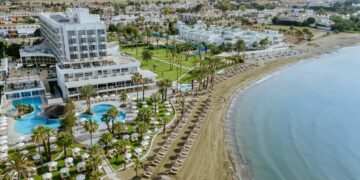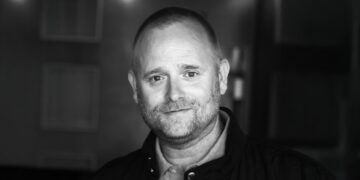If you live near the water in most American cities, chances are you’re not wealthy. The neighborhoods closest to commercial harbors tend to house low-income families, working people, communities that have been there for generations.
They wake up to diesel fumes. They walk their kids to school past ferry terminals pumping exhaust into the morning air. They’ve learned to tune out the constant rumble of engines, the smell that hangs over the playground, the haze that settles in when the wind dies down.
And when someone asks why they don’t just move, the answer is pretty straightforward: to where, exactly, and with what money?
This is the reality Maria Andrade wants to change. After spending more than twenty years raising five children and working as a licensed real estate professional, she founded Harbor Current Foundation Inc. with a specific goal: replace diesel-powered harbor vessels with electric alternatives in four major cities, then expand from there. She’s asking for $10 million to make it happen in Miami, Annapolis, Charleston, and Boston within 18 months.
The question isn’t whether diesel exhaust from harbor vessels is a problem. The EPA says marine vessels account for nearly 30% of total port emissions. The question is why we’ve collectively decided that’s just the cost of living near the water, and why the people paying that cost are almost always the ones with the fewest choices.
The Geography of Breathing Dirty Air
Walk through neighborhoods near Boston’s harbor, Miami’s waterfront, or areas adjacent to any major American port and you’ll find a pattern. These aren’t the luxury waterfront condos. They’re the places where longshoremen, service workers, and working families have built communities over decades. The rent is lower because the location comes with tradeoffs nobody puts in the real estate listings.
Higher asthma rates among children. Increased cardiovascular disease in adults. Respiratory illness that compounds with age. All of it documented, all of it connected to diesel particulate matter and nitrogen oxides from vessels that run constantly just a few blocks away.
The cruel math is simple: the people most affected by harbor pollution are the people least able to escape it. For many waterfront families, relocating isn’t realistic. These communities can’t just move away from the pollution.
This is what environmental justice actually means. Not abstract policy debates about carbon footprints, but concrete questions about who breathes what air and whether they have any power to change it.
What $10 Million Actually Does
Harbor Current Foundation has a detailed plan for that funding. With $2.5 million allocated per harbor, the money covers vessel acquisition or retrofitting, charging infrastructure installation, feasibility studies tailored to each city’s setup, community education programs, and operational costs.
The goal is specific: get electric vessels operating in these four harbors within 18 months and cut emissions by 25 to 40 percent in those locations. Install at least four harbor charging stations. Host six educational events. Create what they’re calling a “Clean Harbor Replication Toolkit” so other cities can copy what works.
It’s practical in a way most environmental initiatives aren’t. No waiting for federal policy to shift. No theoretical solutions that might work someday. Just prove it in four different types of harbors and let the results speak for themselves.
Why This Matters Beyond Climate
Andrade spent years guiding families through real estate transitions, which means she understands something most environmental advocates don’t: communities don’t make decisions based on abstract future benefits. They need to see immediate, tangible improvements in their daily lives.
Electric vessels deliver that. The air quality change happens fast when diesel engines stop running. Kids with asthma get relief within months, not decades. Adults with respiratory conditions can literally breathe easier. It’s not a distant promise about saving the planet. It’s cleaner air this year, in this neighborhood, for these families.
“Empathy is the greatest renewable resource we have,” Andrade says. “It fuels collaboration, courage, and change.” She’s not talking about feeling bad for people. She’s talking about understanding what they actually need and building solutions that work for them specifically.
The four cities were chosen deliberately. Miami handles major international port operations and faces immediate climate pressure. Annapolis offers a smaller, historic harbor where changes can happen faster. Charleston’s tourism economy means clean transportation could become a selling point. Boston already has established ferry systems ready to transition.
Each represents a different challenge and a different type of waterfront community. If electric vessels work in all four environments, they’ll work almost anywhere. More importantly, if the air quality improvements are measurable and immediate, other harbor communities will have proof that change is possible.
The Invisible Made Visible
What’s striking about harbor pollution isn’t that it exists. It’s that most people have learned not to see it. You drive past the ferry terminal, maybe notice the smell for a second, then your brain filters it out. Background noise. Part of the scenery.
But for the families living there, it’s never background. It’s the reason their kid needs an inhaler. It’s why grandma’s breathing got worse over the years. It’s the environmental debt they’re paying so the rest of us can take ferries across the harbor without thinking twice about what’s coming out of the exhaust pipe.
Harbor Current Foundation launched this year with a clear timeline: 18 months to get pilot vessels in the water, two years to demonstrate the full model across four cities. Andrade’s larger vision extends to electrifying the waterways of the Americas by 2040, but the four U.S. cities are the immediate test case.
The foundation is new, but the leadership isn’t. Andrade’s ability to bring diverse groups together and turn collaboration into measurable action gives this initiative credibility most environmental startups lack. The $10 million budget is specific and detailed, with most of the money going directly to vessels and infrastructure rather than overhead.
Whether this becomes the model for every coastal city in America or fades into another well-intentioned effort that never quite materialized remains to be seen. But at minimum, Andrade has done something important: she’s made the invisible visible. She’s named the problem everyone who doesn’t live near a harbor has learned to ignore.
Harbor communities have been breathing that air for generations, and nobody asked them if that seemed fair. Maybe it’s about time someone did.


































